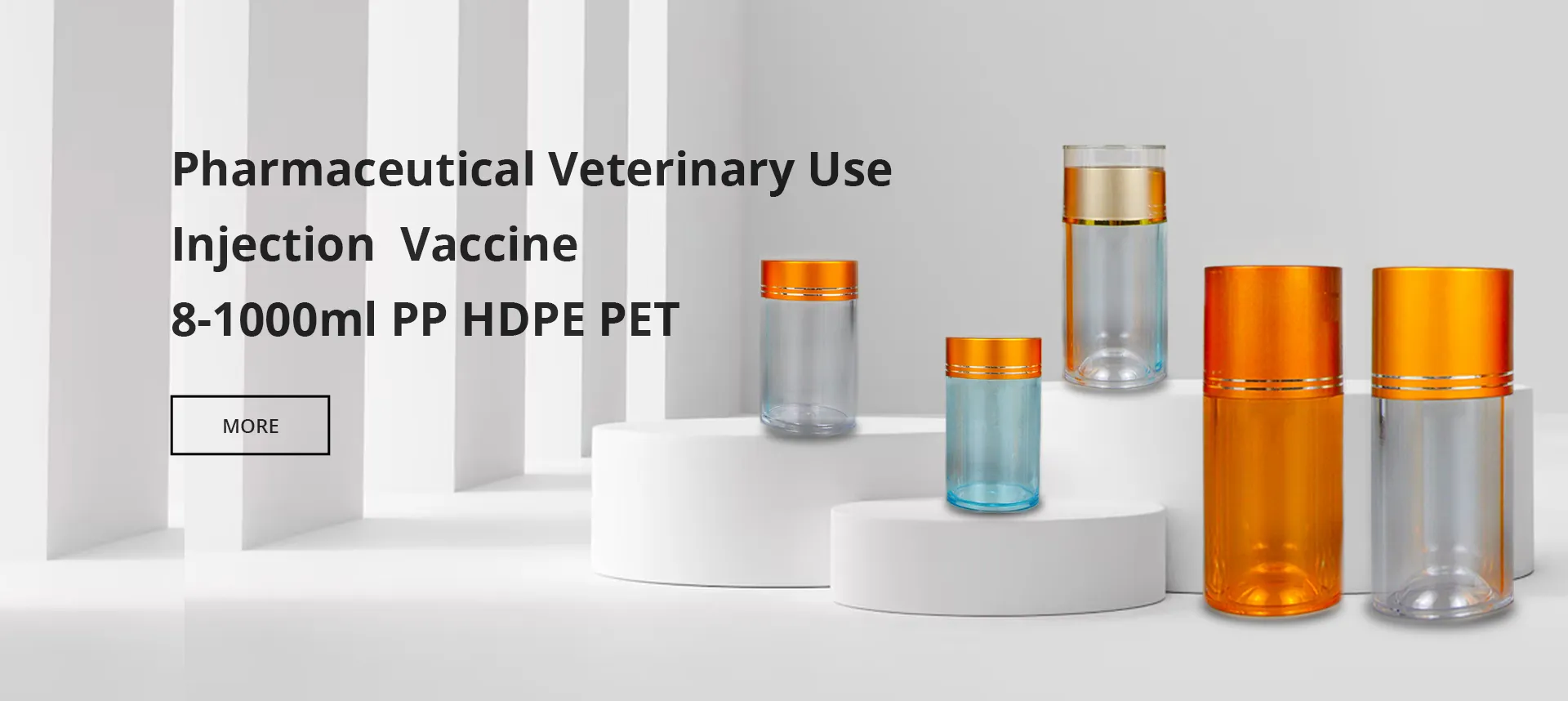Innovative Vaccine Bottles Made from Sustainable Plastic Materials for Enhanced Safety and Efficiency
Exploring the Future of Vaccine Storage The Role of Plastic Vaccine Bottles
As the world grapples with global health challenges, particularly in the wake of the COVID-19 pandemic, the importance of effective vaccine storage and distribution has come to the forefront. One significant innovation in this realm is the use of plastic vaccine bottles. These lightweight, durable containers represent an evolution in how vaccines are stored, transported, and ultimately delivered to the populations that need them most.
Traditionally, vaccines have been stored in glass vials, which, while effective, come with their own set of challenges. Glass is fragile and can break during handling or transport, leading to wastage and potential loss of valuable vaccines. Moreover, glass vials can be heavier and bulkier than their plastic counterparts, resulting in increased shipping costs and logistical complexities. The introduction of plastic vaccine bottles addresses these issues head-on.
Plastic vaccine bottles are typically made from high-density polyethylene (HDPE) or polypropylene, materials known for their strength, chemical resistance, and lightweight properties. This makes them ideal for vaccine storage as they can withstand the rigors of transportation without compromising the integrity of the vaccine. Furthermore, plastic bottles can be designed in various sizes, accommodating different volumes of vaccine, which provides flexibility in manufacturing and distribution.
One of the key advantages of using plastic vaccine bottles is their resistance to breakage
. In emergency situations or during mass vaccination campaigns, the ability to transport vaccines without the fear of shattered vials is critical. This resilience significantly reduces wastage and ensures that more doses reach the people who need them, particularly in remote or underserved areas where access to healthcare can be limited.plastic vaccine bottle

Moreover, plastic bottles can be manufactured with integrated features such as tamper-evident seals and child-proof closures, enhancing the safety and security of the vaccines contained within. These features not only help prevent unauthorized access but also ensure that vaccines remain uncontaminated during handling and storage. This is particularly important given the sensitive nature of most vaccines, which require stringent adherence to storage conditions to maintain efficacy.
In addition to these safety features, plastic vaccine bottles are also more environmentally friendly compared to their glass counterparts. While the production of plastics can have a significant environmental footprint, innovations in recycling practices and the development of biodegradable plastics are paving the way for more sustainable solutions. As the medical community increasingly emphasizes the need for environmentally conscious practices, adopting plastic vaccine bottles can help healthcare providers reduce waste and their overall ecological impact.
The transition to plastic vaccine bottles is not without its challenges, however. There are concerns about the leaching of chemicals from the plastic into the vaccine, which could potentially affect the quality of the product. It is crucial for manufacturers to use high-quality, pharmaceutical-grade plastics that meet rigorous safety standards to mitigate these risks. Ongoing research and development are essential to ensure that plastic materials used in vaccine delivery are both safe and effective.
Furthermore, the logistics of switching from glass to plastic must be carefully managed. Stakeholders in the pharmaceutical industry, including manufacturers, regulators, and healthcare providers, must work together to establish protocols for the use of plastic vaccine bottles. This collaboration will help to assure that the transition is seamless and that the benefits of plastic storage can be fully realized.
In conclusion, plastic vaccine bottles represent a promising advancement in the field of immunization. Their durability, safety features, and potential for environmental sustainability make them an attractive option for vaccine storage and transportation. As we continue to navigate public health challenges, embracing innovative solutions like plastic vaccine bottles could significantly enhance our capacity to protect communities and save lives. The future of vaccine distribution is not just about the innovation of vaccines themselves, but also about how we ensure they are delivered safely and efficiently to those who need them most.
-
Aesthetic Makeup Spray Bottles | Fine Mist Empty RefillableNewsAug.19,2025
-
White Plastic Veterinary Vaccine Vials | Lab Liquid BottlesNewsAug.18,2025
-
Plastic Medicine Liquid Bottle: Secure Flip Top Drug VialsNewsAug.17,2025
-
Durable 250ml Blue Plastic Vaccine Vial for Lab & Vet UseNewsAug.16,2025
-
Sterile Virus Sample Tubes: Secure & Reliable Specimen CollectionNewsAug.15,2025
-
White 250ml Plastic Vaccine Vial for Lab & Vet MedicineNewsAug.14,2025
























